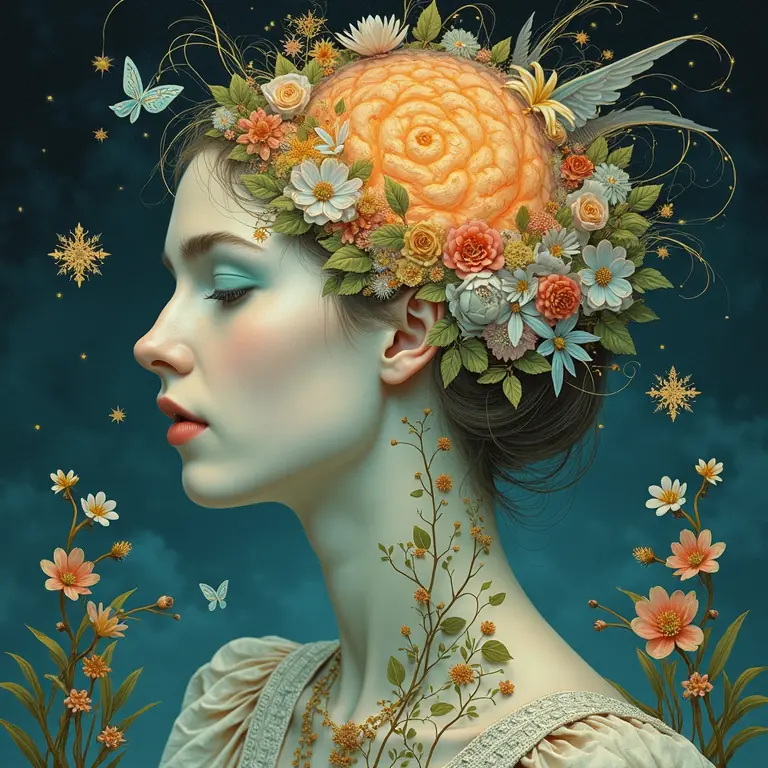Decode Your Dreams: A Friendly Guide to Dream Interpretation
Dreams. Those nightly adventures our minds take while we sleep. Sometimes they’re fantastical, sometimes mundane, sometimes terrifying, and sometimes… just plain weird. But have you ever wondered what your dreams mean? For centuries, humans have sought to understand the hidden language of the subconscious, believing dreams offer insights into our deepest fears, desires, and unresolved issues. This guide is designed to be a friendly and accessible introduction to the world of dream interpretation. We’ll explore the basics, common symbols, techniques for recall, and how to apply this knowledge to your waking life.
Why Do We Dream? A Brief History & Modern Theories
The quest to understand dreams is ancient. Early civilizations, like the Egyptians and Greeks, believed dreams were messages from the gods. Dream interpreters held important positions in society, advising rulers and individuals alike. Aristotle pondered the physiological basis of dreaming, while figures like Artemidorus of Daldis compiled detailed dream dictionaries in the 2nd century AD.
However, the modern understanding of dreams truly began to take shape with Sigmund Freud in the late 19th and early 20th centuries. Freud proposed that dreams are the “royal road to the unconscious,” representing repressed wishes and desires. He believed analyzing dream symbols could unlock these hidden meanings. Carl Jung, a student of Freud, diverged from his mentor, suggesting dreams aren’t solely about repressed desires, but also tap into a collective unconscious filled with archetypes – universal symbols and patterns.
Today, neuroscience offers further perspectives. The Activation-Synthesis Theory posits that dreams are the brain’s attempt to make sense of random neural activity during REM sleep. While this theory doesn’t necessarily discount psychological meaning, it emphasizes the biological processes at play. Another prominent theory, the Threat Simulation Theory, suggests dreams evolved to simulate threatening situations, allowing us to practice coping mechanisms in a safe environment.
Ultimately, the ‘why’ of dreaming is likely multifaceted, encompassing biological, psychological, and even evolutionary factors. Regardless of the underlying cause, the fact remains: dreams offer a rich source of information about ourselves.
The Basics of Dream Interpretation
Before diving into symbols, let’s establish some fundamental principles:
- Dreams are Personal: While some symbols have common interpretations, the meaning of a dream is ultimately unique to the dreamer. Your personal experiences, emotions, and cultural background heavily influence how symbols manifest in your dreams.
- Context is Key: Don’t isolate individual symbols. Consider the entire dream narrative – the setting, characters, emotions, and plot. A snake, for example, might represent danger to one person, healing to another, or transformation to someone else, depending on the dream’s context and the dreamer’s associations.
- Emotions Matter: Pay close attention to the feelings you experience *during* the dream and *after* waking up. These emotions are often more revealing than the specific symbols themselves. Were you scared, anxious, joyful, or peaceful?
- Dreams Rarely Mean Exactly What They Seem: Dreams often use metaphors and symbolism to disguise underlying meanings. A dream about being chased isn’t necessarily about being physically pursued; it could represent avoiding a difficult emotion or situation.
- Don’t Take it Too Literally: Avoid rigid interpretations based solely on dream dictionaries. Use them as a starting point, but always consider your own personal connection to the symbols.
Common Dream Symbols & Their Possible Meanings
While individual interpretation is crucial, certain symbols appear frequently across cultures and often carry similar connotations. Here’s a look at some common dream symbols and their potential meanings. Remember, these are guidelines, not definitive answers!
- Water: Often represents emotions. Calm water can symbolize peace and tranquility, while turbulent water may indicate emotional turmoil.
- Flying: Can symbolize freedom, liberation, a sense of control, or escaping a difficult situation.
- Falling: Often associated with feelings of insecurity, anxiety, or loss of control.
- Teeth Falling Out: Frequently linked to feelings of powerlessness, anxiety about appearance, or communication difficulties.
- Being Chased: May represent avoiding a problem, unresolved conflict, or repressed emotions.
- Houses: Often symbolize the self. Different rooms can represent different aspects of your personality.
- Cars/Vehicles: Represent your life’s journey and how you’re navigating it. The condition of the vehicle can reflect your sense of control and direction.
- Animals: Often represent instincts, primal urges, or specific personality traits. Consider the animal’s characteristics (e.g., a lion representing courage, a snake representing transformation).
- Death: Rarely a literal prediction of death. More often symbolizes endings, transitions, or the need to let go of something.
For a deeper dive into understanding these and other common dream meanings, check out this video:
Techniques for Dream Recall
The first step to dream interpretation is remembering your dreams! Many people struggle with dream recall. Here are some techniques to improve your ability to remember:
- Keep a Dream Journal: This is the most effective method. Place a notebook and pen (or a voice recorder) by your bed. As soon as you wake up, *before* getting out of bed, write down everything you remember, even if it’s just fragments.
- Set an Intention: Before going to sleep, consciously tell yourself that you want to remember your dreams.
- Avoid Alcohol & Caffeine Before Bed: These substances can disrupt REM sleep and reduce dream recall.
- Establish a Regular Sleep Schedule: Consistency helps regulate your sleep cycles, making it more likely you’ll experience REM sleep and remember your dreams.
- Wake Up Slowly: Avoid jolting awake with a loud alarm. Gentle awakening allows your dream memories to linger.
- Review Your Dream Journal Regularly: Looking back at past dreams can help you identify recurring themes and patterns.
Dream Interpretation Techniques: Putting it All Together
Once you’ve started remembering your dreams, here are some techniques for interpreting them:

- Free Association: Write down the key elements of the dream (symbols, characters, setting). Then, write down whatever comes to mind when you think about each element – don’t censor yourself! This can reveal hidden associations and emotional connections.
- The “What If” Game: Ask yourself “What if this symbol represented…?” Explore different possibilities, even those that seem far-fetched.
- The Dream as a Story: Retell the dream as if you were narrating a story to someone. Pay attention to the emotional arc of the story and the overall message it conveys.
- Identify Recurring Themes: Are there any patterns or motifs that appear in multiple dreams? These recurring themes often point to unresolved issues or important life lessons.
- Consider Your Waking Life: What’s happening in your waking life that might be influencing your dreams? Are you facing any challenges, experiencing strong emotions, or making important decisions?
Lucid Dreaming: Taking Control of Your Dream World
What if you could become aware that you’re dreaming *while* you’re dreaming? This is the realm of lucid dreaming. Lucid dreamers can often control their dream environment and interact with dream characters. While not directly related to interpretation, lucid dreaming can be a powerful tool for self-exploration and personal growth.
Interested in learning more about lucid dreaming? Check out this guide: Decode Your Dreams: A Friendly Guide to Lucid Dreaming.
The Importance of Self-Reflection & When to Seek Help
Dream interpretation is, at its heart, a form of self-reflection. It’s about exploring your inner world and gaining a deeper understanding of yourself. It’s not about finding definitive answers, but about asking questions and exploring possibilities.
However, if your dreams are consistently disturbing, causing significant distress, or interfering with your daily life, it may be helpful to consult with a therapist or counselor. They can provide a safe and supportive space to explore your dreams and address any underlying issues. Recurring nightmares, for example, could be indicative of trauma or anxiety.
Integrating Dreams into Your Waking Life
Dream interpretation isn’t just about understanding the past; it’s about informing the present and shaping the future. Here are some ways to integrate your dream insights into your waking life:
- Journaling: Continue journaling about your dreams and reflect on how they relate to your daily experiences.
- Creative Expression: Use your dreams as inspiration for art, writing, music, or other creative pursuits.
- Problem-Solving: If you’re facing a difficult situation, ask yourself what your dreams might be telling you about it.
- Personal Growth: Use your dream insights to identify areas where you can grow and develop as a person.
Remember, dreams are a valuable resource for self-discovery. By paying attention to your dreams and taking the time to interpret them, you can unlock a wealth of wisdom and insight.
Beyond Dreams: Cultivating Mindfulness in Your Downtime
While dream interpretation can provide valuable insights, it’s also important to cultivate mindfulness and self-awareness in your waking hours. Engaging in mindful hobbies can enhance your overall well-being and provide alternative avenues for self-exploration. For some ideas, explore: Decode Your Downtime: A Friendly Guide to Mindful Hobby Selection.
Resources for Further Exploration
This guide has provided a starting point for your dream journey. Here are some additional resources:
- Dream Dictionaries: Be cautious with these, but they can offer a starting point for exploring symbol meanings.
- Books on Dream Interpretation: Explore the works of Freud, Jung, and contemporary dream analysts.
- Online Dream Forums: Connect with other dreamers and share your experiences.
- Therapists specializing in Dreamwork: Seek professional guidance for deeper exploration.
Ultimately, the best resource is your own intuition and personal connection to your dreams. Trust your instincts, be open to new possibilities, and enjoy the journey of self-discovery. Remember to revisit Decode Your Dreams: A Friendly Guide to Dream Interpretation as you continue your exploration.


Discussion about this post